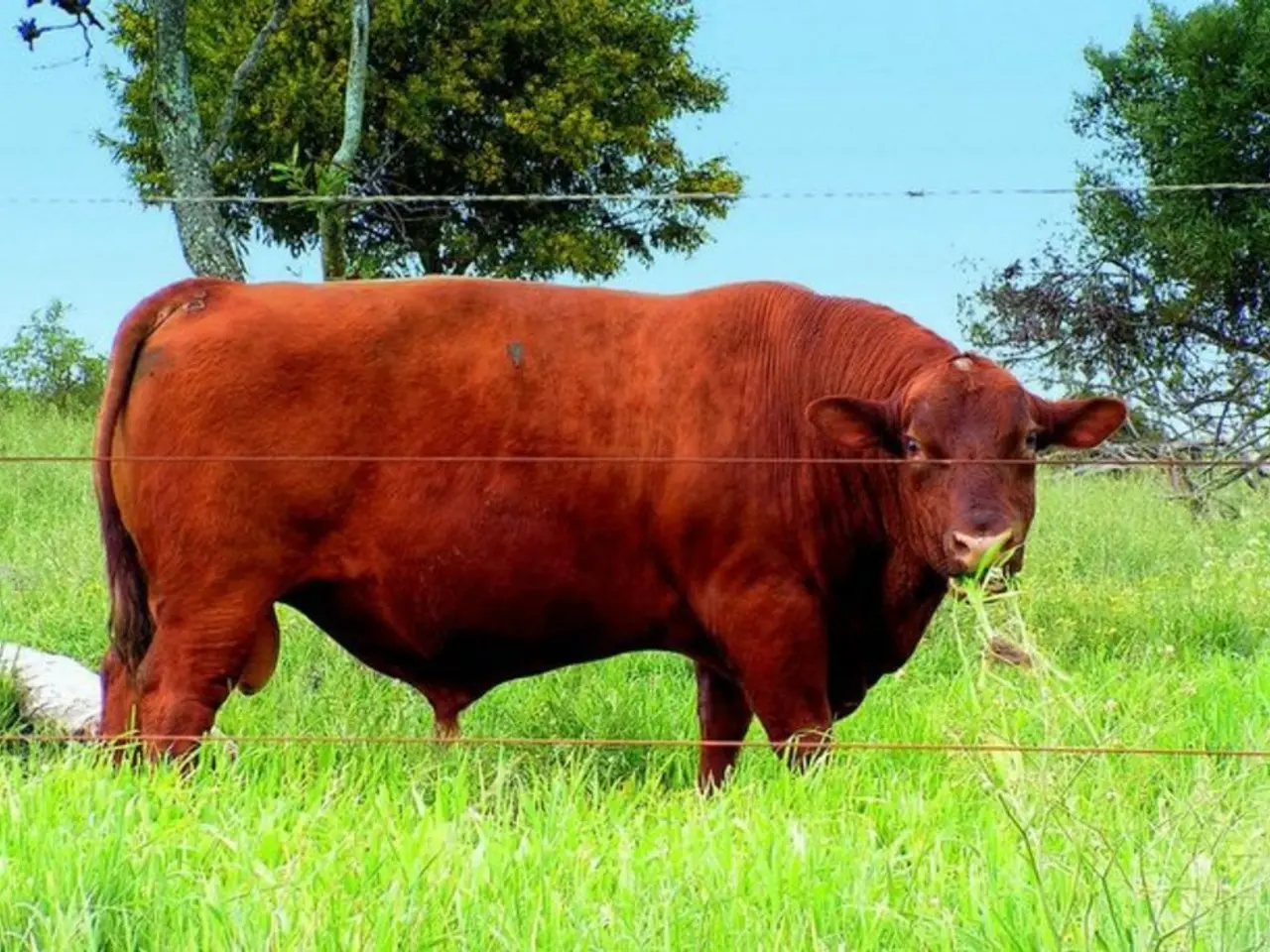Continued Uptrend in Cattle Prices: Observing Key Factors Following Recent Historic Highs
The U.S. cattle market has been witnessing a significant surge in August 2025, with both live cattle and feeder cattle futures reaching new highs.
On August 5, 2025, August live cattle (LEQ25) scored a contract and record high of $235.025 a hundredweight. This uptrend in early August was mirrored by August feeder cattle futures (GFQ25), which hit a record high of $341.975 a hundredweight on the same day.
The rally in cattle futures is primarily attributed to tight cattle supplies and robust cash trade, as well as strong wholesale beef demand and prices. Cash cattle prices have been firm, with northern trade around $245 and southern around $235, and strong online Fed Cattle Exchange BidTheGrid™ sales reported.
The latest USDA cattle-on-feed report, released in late July, indicated a 2% decrease in the inventory of cattle on feed for the slaughter market, which leans price-friendly for cattle markets. Marketings of fed cattle during June 2025 totaled 1.71 million head, a 4% decrease from 2024 and the lowest for June since the cattle-on-feed series began in 1996.
The tight supply and strong demand have been underpinning live cattle values, as reflected in the wholesale boxed beef prices. On Tuesday, Choice-grade cutout value was up another $4.15 to $369.94, and Select-grade gained $4.35 to $345.94.
However, the run to record futures highs has attracted technical buying and speculative length. When some traders took profits, the market swung sharply lower, and contracts reached exchange daily limits, especially in feeders. After sharp feeder losses into the close, exchanges expanded daily limits for both live and feeder cattle for the next trading day (live cattle limits expanded to $10.75; feeder limits to $13.75), illustrating elevated volatility during the up/down swings.
Reports show that feeder cattle posted limit losses nearly across the board on one trading day, while the CME Feeder Cattle Index was still rising, indicating mixed near-term technicals versus underlying index strength.
As the outdoor grilling season passes its peak, seasonal cattle slaughter levels tend to start rising. However, beef packers may be reluctant to raise their bids for cash cattle in such conditions due to presently in the red cutting margins.
The months of September and October can be unkind to the U.S. stock market, and the stock market has a significant impact on consumer confidence. As we move forward, it will be interesting to see how these factors influence the cattle market.
[1] Feeder Cattle Futures Roar to Records, Then Retreat (August 7, 2025) - Agriculture.com [2] Live Cattle Futures Hit Record High; Feeders Also Up (August 6, 2025) - Agriculture.com [3] USDA Cattle-on-Feed Report Shows Tight Supplies for Cattle Markets (July 30, 2025) - Agriculture.com
- Given the surge in live cattle and feeder cattle futures, an investor might be interested in exploring the opportunities in the stock-market that could be driven by the finances of beef companies, as the robust wholesale beef demand and prices are indicative of a promising outlook for the cattle market.
- The volatility observed in the feeder cattle market, with contracts reaching exchange daily limits, could potentially impact the finance sector, particularly for traders and investors who have positions in the stock-market, as the unpredictable moves in the futures market could influence market sentiments and overall trading dynamics.




